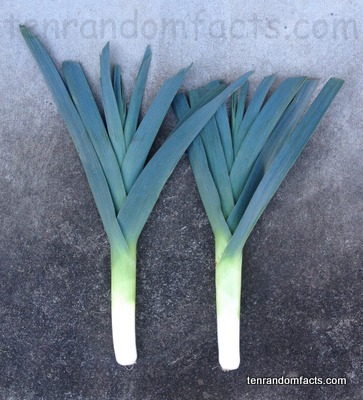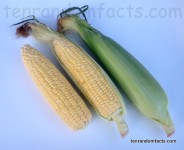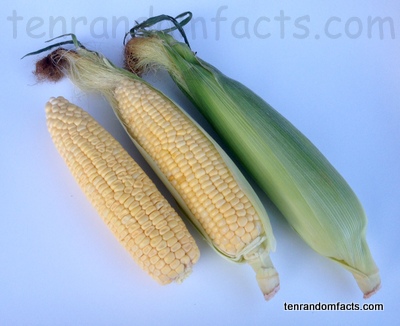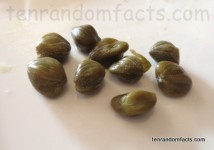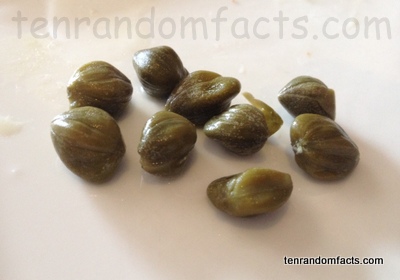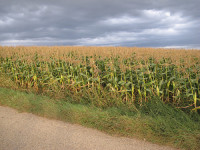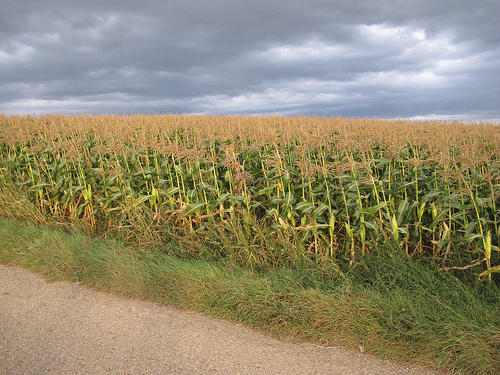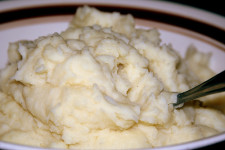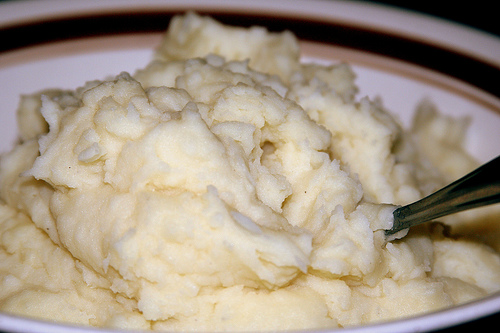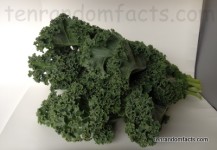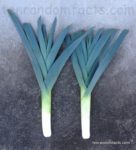
Bringing a leek on a boat will surely lead to calamity.
- Leeks are somewhat leafy, edible vegetables that are thought to have originated in parts of the Mediterranean region, and they have been cultivated for thousands of years in a number of surrounding areas.
- The botanical classification of the leek is Allium ampeloprasum var. porrum, and it is from the family Allium, the family of onions.
- Leeks are mostly green in colour with large flat leaves that grow centrally around each other, and they form a thick stem at the base that is coloured white, and to encourage taller, whiter stems, the plants are usually grown in furrows and as they grow, soil is piled around the base of the plant.
- The leek is embedded deeply in Welsh culture, likely stemming from the legend of Welsh soldiers wearing the vegetable in their hats to differentiate their foes from the enemy, the Saxons, in 640 AD.
- Leek plants usually have a diameter between 2.5 and 6 centimetres (1 and 2.4 inches), and can reach 1.5 metres (5 feet) in height, though if purchasing them at a shop or market, the tops have usually been trimmed off and discarded, reducing their size down to around 60 centimetres (24 inches) or less.
- The white stem of a leek is the most commonly utilised part of the plant, and it can be sliced and eaten raw, or cooked by boiling, frying or steaming, and it is often used in soups, salads or eaten as a side vegetable.
- Leeks were popular in Ancient Egyptian, Roman and Greek cuisines, even favoured by Roman Emperor Nero, who believed they had positive enhancements on one’s singing voice.
- The flavour of leeks is commonly compared to onions, albeit lighter in flavour with a sweet tendency, and the vegetable has a crisp texture when raw, which sometimes softens, depending on the method of cooking.
- The term ‘leek’ derives from the word ‘leac’ of the Ango-Saxon language, translated as ‘herb’ or ‘plant’, which is also the second part of the original term for ‘garlic’.
- Leeks are very high in vitamin K and are high in manganese, vitamin A and vitamin C, and they have many other vitamins and minerals.
Bibliography:
Block E, 2010, Garlic and Other Alliums: The Lore and the Science, pp 4, State University of New York, New York, https://books.google.com.au/books?id=6AB89RHV9ucC&printsec=frontcover#v=onepage&q&f=false
Leek, 2011, Fresh For Kids, http://www.freshforkids.com.au/veg_pages/leek/leek.html
Leek, 2016, Wikipedia, https://en.wikipedia.org/wiki/Leek
Leeks, 2016, The World’s Healthiest Foods, http://www.whfoods.com/genpage.php?tname=foodspice&dbid=26
Leeks – A Short History, 2015, Leek Growers Association, http://wwwritish-leeks.co.uk/funfacts.php
White K & Zellner J, Onion, 2008, Hamilton C0llege, http://academics.hamilton.edu/foodforthought/our_research_files/allium.pdf





